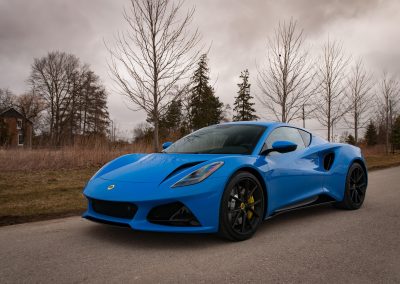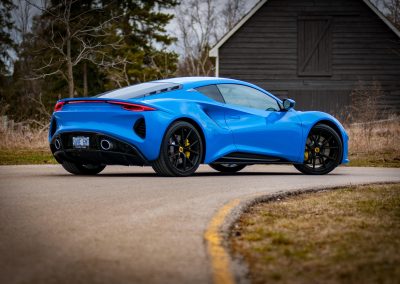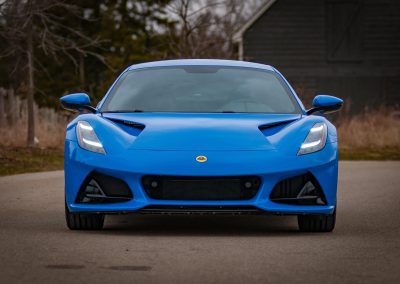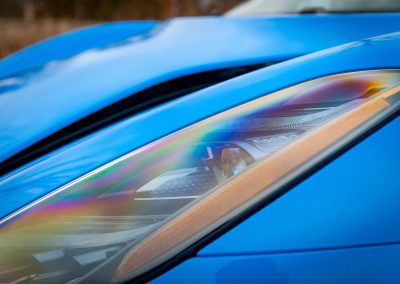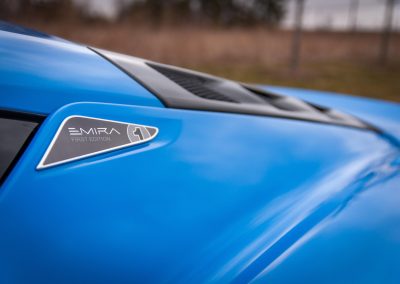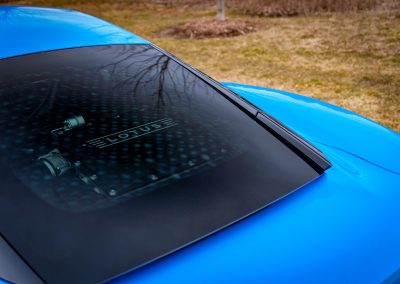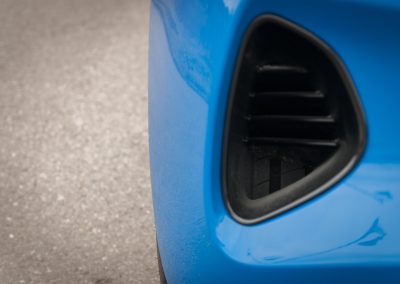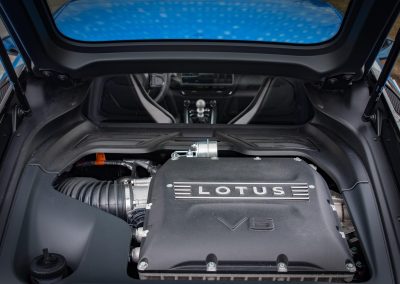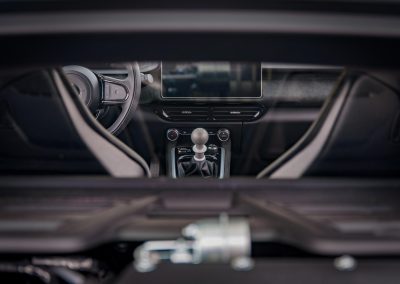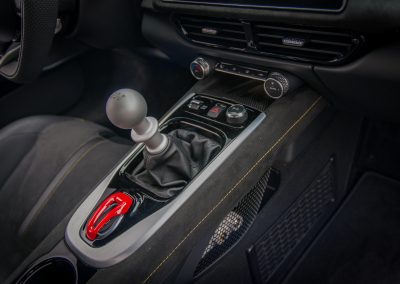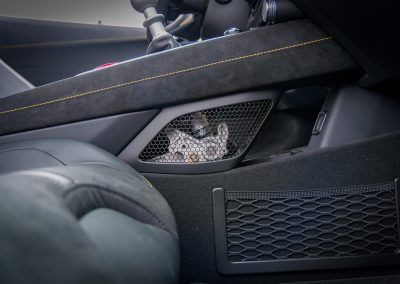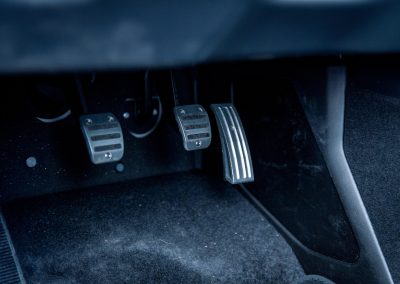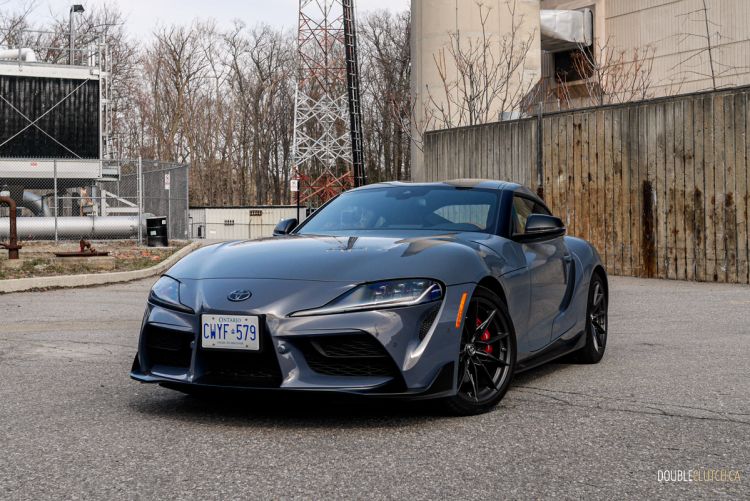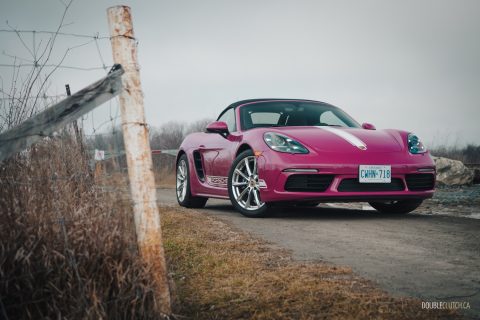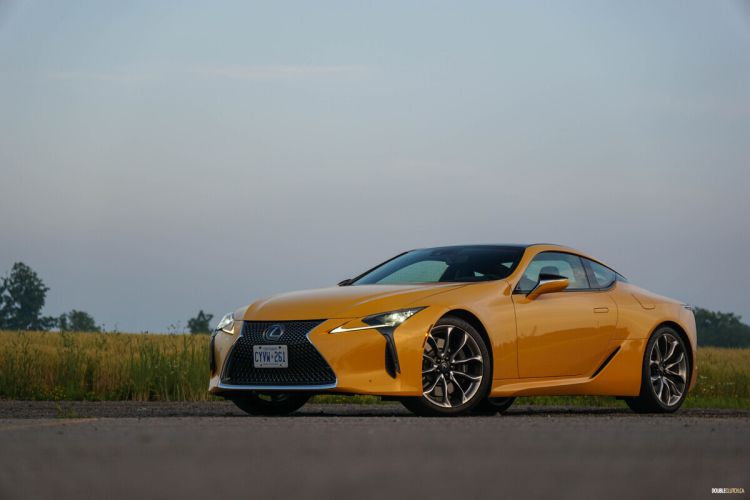Despite having a history that dates back to 1948, Lotus Cars is not a brand most car buyers in Canada would typically remember. Lotus’ recent announcement to transition to only building electric vehicles brings the expectation that it will broaden its appeal in the mass market, but the risk is that it may deviate too far from what Lotus does best — its racing culture and building pure driving machines. Whatever the future has in store, I hope Lotus puts the same foot forward as they did with the 2024 Lotus Emira.
First thing first, the styling. I mean, look at it! The Emira looks absolutely incredible from all angles — the proportions are textbook for a mid-engine sports car. Remember the Lamborghini Calà concept car? The one most of us millennials lose our minds over from Need For Speed 2 SE? The Emira’s front end reminds me of that and, earning a whole lotta brownie points from those of us who grew up in the golden era of supercars. Two large cutouts on the hood draw air into the radiator and this distinctive design sets the stage of what we can expect through the rest of its heavily sculpted body.

If you think the front end is striking, just wait until you see the Emira’s hips. The car’s side profile looks stunning, and also as we have come to expect with Lotus, there is always function attached to form. The side strakes feature a clever divider to split the airflow into the air intake and engine through separate channels for better cooling. Plus, the contours are beautiful.
Rounding out the Emira is a simple yet cohesive rear end that is drastically different than the round taillights we saw on the Elise and Evora. The slim LEDs look good, with two oversized air outlets below that relieve pressure from the wheel well to reduce drag coefficient. The Seneca Blue paint on this car beams under the sun, and the Emira receives as much attention as the best of ’em.

The mid-engine Emira is available with two engine options. A 2.0-litre turbocharged four-cylinder sourced from Mercedes-AMG is standard, but this Emira has the optional, tried-and-true 3.5L V6 from Toyota in the middle. It is also supercharged, producing a total of 405 horsepower and 310 pound-feet of torque. Driving purists can rejoice over the available six-speed manual tranmission as long as they pick the V6 — an option I thought was extinct in high-end sports cars. Rowing through the gears, the pedals are tightly placed and lean towards the centre of the car, but it was not enough to impact my driving position once I got used to it. Operating the clutch is easy with a wide grabbing point, and the shifter is precise with short throws. The Emira’s hill-start assist feature is useful when getting rolling from an incline, though automatic downshift rev-matching is notably absent.
These days, most vehicles above $100,000 will likely output well over 400 horsepower, so the V6 Emira’s figures are nothing to write home about. In fact, with the turbo-four rated at 360 hp and 317 lb-ft of torque, the V6 does not seem like that much of an upgrade. However, the Emira is worth its weight — or lack thereof — in gold, tipping the scales at under 3,200 pounds. Zero-to-100 km/h arrives in 4.3 seconds — a modest achievement by today’s standards — with a top speed of 290 km/h.

This Emira was still within Lotus’ suggested 1,600-kilometre break-in cycle, so I kept it under 3,500 rpm. Even taking it easy, I managed to get a feel for its linear power delivery, and never had to downshift to keep up with traffic despite running in the lower end of the Emira’s rev range. I did notice a bit of rev hang taking some of the joy out of the experience, but I imagine that will not be a concern charging hard to the Emira’s 6,800-rpm redline.
To no one’s surprise, the Emira is a master communicator. The hydraulic steering rack offers good weight, incredible response to inputs, and excellent feel. The Emira rotates nicely around every turn and the upgraded sport suspension feels perfectly in-tune to keep the car flat and balanced. Two-piece brake discs with oversized calipers offer plenty of bite, though the sensitive pedal takes some getting used-to for smooth stops, especially in traffic.

There are three drive modes –— Tour, Sport, and Track — that organize the Emira’s engine, stability control response, and exhaust note. With no individual drive mode for custom selections, the most noticeable difference between the profiles lies in its exhaust sounds. In track mode, the Emira growls in a way that will garner attention without being overly loud, with satisfying burbles during downshifts that made me want more.
While its handling came as no surprise to anyone familiar with Lotus, the Emira’s interior and comfort will definitely shock many. The Emira has a fairly simple but premium-feeling cabin with mostly Nappa leather, Alcantara, and metal surfaces. The power-adjustable seats are heated and offer good balance between cornering support and long-distance comfort, and I really like the yellow contrast stitching to match those yellow calipers and the Lotus logo. My favourite interior design feature is the exposed gear shifter linkage beneath the gear lever, as well as the throttle actuator atop the engine. You can see it moving!

Getting into and out of the Emira is relatively easy compared to most other Lotus cars, and there is good headroom once you are settled. No front storage is available, but the trunk is decently sized, plus there is a bit of extra space for a handbag or briefcase behind the seats. The suspension does a good job in absorbing most road imperfections while also inspiring confidence around corners, and the Goodyear Eagle F1 Supersport tires favour refinement a little more than the other no-cost tire option, Michelin Pilot Sport Cup 2s.
A 10.25-inch touchscreen on the centre console houses the infotainment system with Apple CarPlay and Android Auto integration built-in. This First Edition model comes with the upgraded KEF 10-channel audio system, but the sound quality leaves much to be desired for a vehicle at this price range. We do not expect much driver assistance from a brand like Lotus; the Emira’s only features in this category are cruise control and front and rear parking sensors.

For now, the Emira comes in one flavour only: the fully loaded First Edition. It includes the Drivers, Convenience, and Design packages, and is a good value with many desired features such as Track Mode, an active exhaust, lightweight forged wheels, and Alcantara interior trim. A four-cylinder First Edition will run you $126,900, while this V6 goes $129,900 as-tested.
The 2024 Lotus Emira is a special car. It reminded me that power is not everything even in this modern acceleration-obsessed world, and that there is value in building a sports car that is lightweight and engaging to drive. Of course, it helps that the Emira looks as striking as it does, but its days are already numbered. With Lotus’ announcing its focus on electrification, the Emira will be its last model with an internal combustion engine. Let’s cherish this last hurrah, because I will miss the Emira when it is gone.

